Choosing Solar Power for Your Home
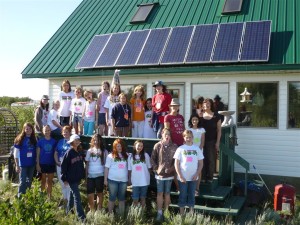
My solar home
I live in a solar home - it is powered by the sun. When I make my morning toast, grab my drink from the fridge, sit at my computer and write this post, it is powered by the sunlight striking the panels on my roof.
It is an exhilarating and liberating feeling – I am using solar power, something that is already shining on my home in clean and limitless supply.
If you live in an area with plenty of sunshine, like Saskatchewan, you can make this happen for your home. This article explains what’s involved in deciding on solar power for your home, farm or business.
Choosing a Location for the Solar Panels
Solar panels work by converting sunlight to electricity – the more sunlight that strikes the panels, the more electricity they produce. The best position for maximizing the amount of sunlight is facing the equator (true south in the northern hemisphere, true north in the southern hemisphere). The more panels you have, the more sunlight they will receive and the more electricity they will produce.
House Roof
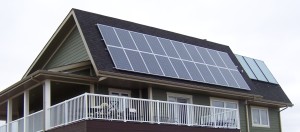
A roof clear of obstructions
Solar panels take space. The most convenient place to put them is on your roof if you have a large enough area facing close to true south (true north in the southern hemisphere). A typical city home will need about 10 solar panels. Those 10 panels will require 35 feet by 15 feet of south facing roof space. The roof should be as clear as possible – no vents, antennas or other obstacles that would interfere with mounting the panels or shade the panels. East and west roofs will also work but will need 20% more panels to produce the same amount of electricity.
Outbuildings
If you don’t have room on your roof there are other places to mount panels. Look at a garage or shed roof – see if these have a clear south facing roof that’s large enough to accommodate the panels.
Pole Mounts and Trackers
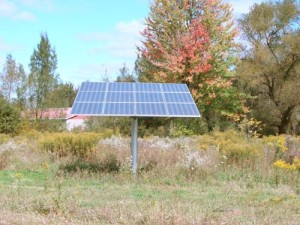
A Pole Mount
Solar panels can also be mounted on a pole - some of these can be adjusted for the seasons. If you are really short of space and need to make the most of what you have a tracker is another, though expensive, option. This automatically tracks the sun over the day and the seasons.
Ground Mounts
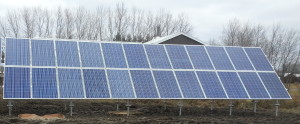
A Ground mounted Rack
A simpler, less expensive option than pole mounts is to mount panels on a rack on the ground. You will need room in your yard for these mounts – they will need to face south and have a clear area in front of them so that there is little or no shading. Large trees or brush, other buildings or farm structures can shade the panels if they are too close.
Getting the Most from your Solar Investment
Solar panels will produce the most power if they are set at the optimum angle and orientation for your geographic location, and in an area with no shading. This ideal position may not be practical for your roof or yard but very good power production can often still be achieved with the apace you have available.
Minimize Shading on the Solar Panels
If you plan to mount the panels on your roof, look to see if you have chimneys or gabled dormers that would shade the panels at some times of day. Snow can also build up beside dormers covering any solar panels that are mounted close to them.
Other sources of shading are tall trees in yours or your neighbor’s yard and any outbuildings on your own or neighboring properties. The key is to find the least shaded area in which to mount your solar array.
What About Snow Buildup?
If you get lots of snow in the winter, you will want to do something to avoid snow buildup on the panels or have an easy way to remove the snow. A steeper roof angle will help because the snow will slide off more quickly when the sun comes out and warms the glass surface of the panels. As the surface becomes slippery the snow will slide off fairly readily.
If your roof is not too high up you can use a roof rake on an extended pole to remove the snow from the panels on those few occasions when it will be needed.
Some Other Things to Think About
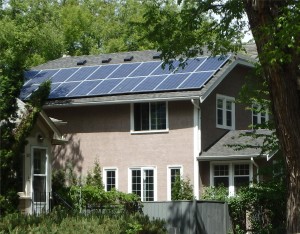
A solar power system is a substantial investment with a long lifetime (over 25 years) so it’s a good idea to think about the condition of the roof on which those panels are mounted and how the immediate surroundings may change during that time.
The Future of Your Roof
If you are thinking of roof mounting the panels, make sure that your roof will last for this time period. If your shingles need replacing now is the time to do it – before mounting the solar array. Shingles with a longer warranty (35 years or more) or other roofing materials such as metal would be a good choice. A lighter color of roofing material will last longer and also keep your house cooler in the summer. Once the panels are up, they will have to be temporarily removed and then reinstalled for any roof repairs.
Landscaping and Building Plans
Solar panels work best if they are not shaded. Do your landscaping plans include trees that will grow and eventually shade the solar array? Are you (or your neighbor) planning a future garage of shed that will block the sun? Look at those possibilities when you plan the location for your solar panels.
Call us toll-free at 1-877-441-2355 if you are interested in a site assessment to determine your potential for solar power.